Jovian Chronicles Second Edition RPG Player's Handbook by Doresh
Introduction
Original SA post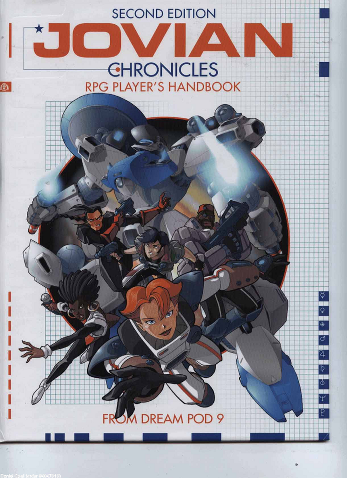
quote:
Music : Many anime are known for their great soundtrack. This can enhance your playing experience, too. An opening theme song to start each session is almost mandatory.

-
Burst of Angst
: Traumatic events can cause you to go berserk, allowing you to boost most of your attributes at the cost of becoming a bit mentally unstable. Typical underaged mecha pilot stuff.
-
Creative Stunt
: For all your MacGyuver needs.
-
Inner Well of Strength
: Ignore wound penalties through sheer badassery.
-
Last Hurrah
: If you have to go down, go down with a bang.
-
Sweet Success
: Your standard skill roll boost.
The Solar Nations
Original SA post
Organizations
Original SA post
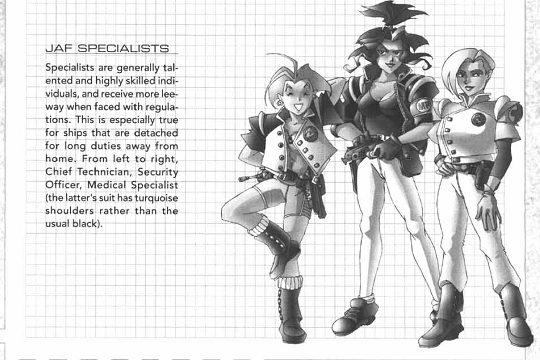
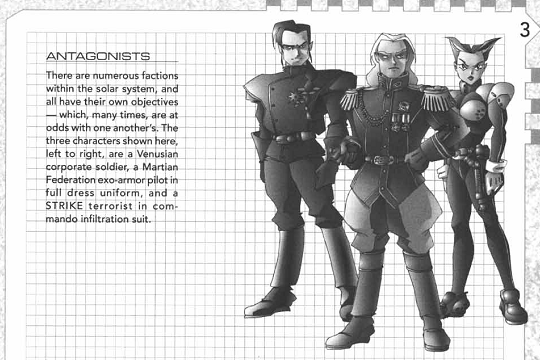
Character Creation
Original SA post
-
Agility (AGI)
: Your dexterity and reflexes
-
Appearance (APP)
: Your bishounen/waifu power level
-
Build (BLD)
: Your overall mass and size. This one actually goes from -5 (little child) to +5 for humans (just below 250 kilos).
-
Creativity (CRE)
: Essentially your mental agility.
-
Fitness (FIT)
: How tough and muscular you are.
-
Influence (INF)
: Your raw diplomatic and leadership skill.
-
Knowledge (KNO)
: Your education and memory.
-
Perception (PER)
: Your awareness.
-
Psyche (PSY)
: Are you more like Shinji Ikari or Kamina?
-
Willpower (WIL)
: How badass you are. This is separate from PSY because even mentally unstable trainwrecks like Shinji don't chicken out all that often.
-
The Rookie
: The typical mecha protagonist. You start of with fewer Skill Points, but gain twice the XP, which really helps you in the long run. Your anime power is "Beginner's Luck", which allows you to turn a negative modifier positive or the other way around, allowing you to do the impossible and break the unbreakable.
-
The Veteran
: The opposite of the Rookie. You start with more Skill Points, but gain only half the XP, so you better concentrate on your important skills. Their anime power is "Voice of Experience", which grants someone a +3 bonus or have him succeed automatically in a pure roleplaying scene. This effect can be delayed, so your advice of "Do a barrel roll!" can be cashed in anytime during the same session.
-
The Expert
: A tough jack-of-all-trades who doesn't quite get along with everyone else and likes to play the rival - that is before he starts warming up to everyone else. Very tsundere. They have fewer Character Points available (resulting in lower attributes), but their skills' Complexity (a new feature in SilCORE that determines your breadth of knowledg in a skill) is always considered to be 1 higher than it actually is. Their anime power is "Survival Instinct", wich gives them a pool of "Survival Points" that increases after each session and can be spend to reduce an opponent's skill for the duration of the scene or combat.
-
The Specialist : The opposite of the Expert. These guys and girls are insecure and have overspecialized in a particular field. They start off with more Character Points, but they must pay for that with Flaws (aka Disadvantages). This the only time Advantages or Flaws are mentioned in this chapter, so I guess other JC characters don't have those?
Their anime power is "To the Limit", giving them a temporal boost to their equipment's stats (though this only really applies to vehicles and weapons).
-
The Curiosity
: Usually female weirdoes like Rei Ayanami. They start off with fewer Character
and
Skill Points, and they must have an APP of at least +1 because female weirdoes in anime must be attractive. Their anime power is "Charm", which they can use to fascinate people (so a failure makese them quite suspicious). They are also encouraged to get a bit of a special GM treatment, with special equipment or convenient implants and stuff. It's a bit like having "GM's Girlfriend" as a class or something.
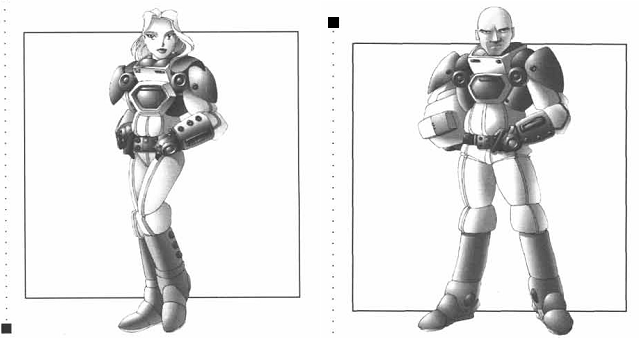
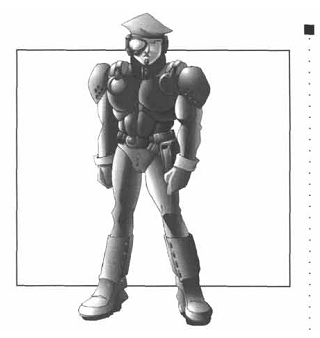
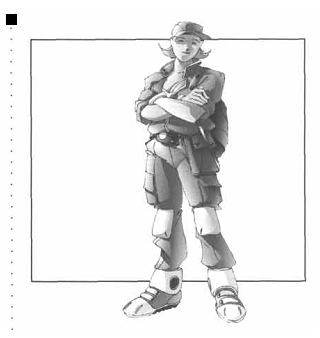
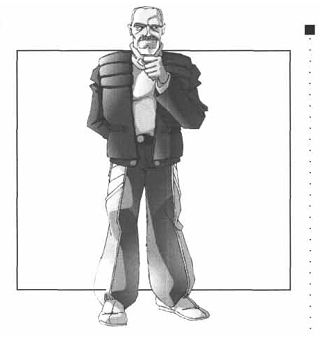
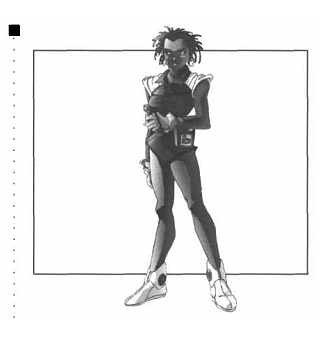
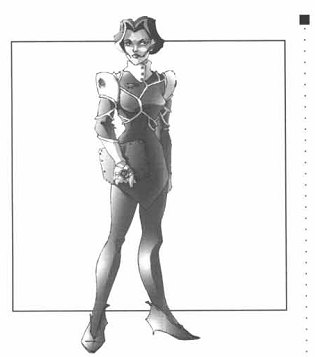

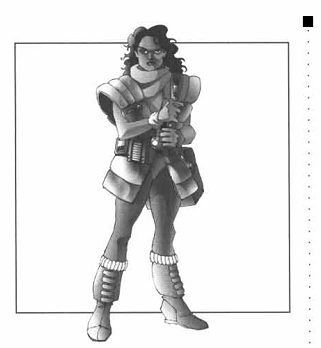
Living in Space
Original SA post Jovian Chronicles Second Edition RPG Player's Handbook
Chapter 5: Living in Space
Everyday Technology
Thanks to the colony's temporary isolation and the now ongoing Cold War, technology advances in the last couple years have been mostly focused on the military side of things.
Not only have things slowed down for normal people, but it has gotten very crowded for people living on orbital stations, easily eclipsing anything seen on Earth. We're talking about population densities of 7,500 to over 20,000 people per km². I hope claustrophobia has gone extinct in the future.
With so many other people around, it has become mandatory for an orbital guy to stay clam and wait patiently in line as to not cause total chaos.
Seasons and daylight cycles are still a thing in space, though they are artificially simulated and controlled to the inhabitant's liking.
(He said, imagining a Goth station that is always cold and dark.)
Living quarters are obviously pretty cramped, with a single 5x3 m room being the average (parking facilities are rented separately). The book explains that even with all sorts of foldable and multi-purpose furniture, there just isn't enough space for a laundry list of weapons, clothes and other stuff. Players need to put priorities on what their PC keeps stored away, unless he really likes sleeping on a stash of weapons, or a piano. If you're players like hoarding loot, they better have access to a merchant ship (or really any ship with a big enonugh cargo bay).
The limited space also means that not everyone will own everything required for a proper household (like spices and stuff), making it pretty common to borrow things from neighbours.
Those O'Neill Cylinders we've heard before are pretty nifty. They use rotational gravity to make the entire interior surface habitable - or rather half of it; the other half is used for windows. An artificial hollow world of sorts. Like the Not-Side-7 of this Not-Gundam.
Asteroid colonies are kind of a mess, with random modules protruding all over the place, and nomads generally don't mind having the inside be full of wires. Most asteroid colonies try to have a gravity wheel or centrifuge to keep people in shape (which is why Lightworlders and ZeeGees can still reach normal physical values), but not every has one. Living there for too long makes it hard to impossible to adapt back to normal gravity.
Smaller orbital stations usually do offer at least partial rotational gravity, but they just don't have the space for the kind of planet-like environments you can have with an O'Neill Cylinder. Their interior is a lot closer to the ship from 2001.
Most of these smaller stations are not purely for living, but tend to serve military, trading and other purposes.
Space Travel
Flying a spaceship can be a bit hard to wrap your head around. Not only do you navigate in a 3-dimensional space, but everything inside that space is constantly moving and rotating around stuff. Flight computers are mandatory here.
To make things easier to manage, things are generally parked in orbits around an interstellar body, be it a planet or the sun. The Mercurian stations for example have a synchronized orbit around the sun that ensures they're always in Mercury's shadow.
To avoid collisions and general chaos, regions near a planet are designated as a space traffic control(STC) zone. Trying to enter such a zone requires the spaceship to call the nearest STC station and follow their instructions. A bit like air traffic on Earth, overseen by the United Solar Nations Space Navigation Authority (SpaceNav).
Some regions are restricted, usually because of military testing (there be mecha prototypes), scientific research or natural hazards.
Refueling is done at "cyclers", automated (though sometimes maintained by nomads) asteroid stations orbiting the sun or a planet. They require an access code to use. With their large territory, the Jovians have the largest amount of cyclers.
The military version of the cycler also comes with ammo and supplies. Naturally, these ones also come with sensor and self-defense systems.
Travelling as a passanger is a lot like buying a ticket for a airplane, except you also need medical documents to rpvoe that you're fit for low-G travel. Prices depend on the distance travelled, your cargo, your own mass if you're to fat and the class you like to use (they go from the First Class with its own private suit down to the Sleeper Class who spend the journey in a hibernation pod, kinda like in the 5th Element). This section of course comes with its own table and guidelines to figure everything out.
Transporting cargo is very similar, with the cost depending on distance, the gargo's mass and its type.
We also learn about the Hanson Circuit, and automated transit system using large booster sleds used for cheap travel between the Jovian states.
There's also stuff about Extra-Vehicular Activity (EVA), which amounts to your usual airlock shenanigans (though it notes that space stations prefer a lower-than-Earth pressure to eliminate those decompression phases) and some general stuff about rescue and salvage missions. More interesting is the section of space racing, including exo-amors and solar sails.
We also find out that ships can use laser cannons for emergency communications. Funky.
And no space section in a hard sci-fi book would be complete without talk about the various ways you can die in space, with the main dangers being decompression, fire and radiation. There's also mention how the various nations deal with evacuations. O'Neill Cylinders are like the Titanic in that there aren't enough lifeboats for everyone. Should your cylinder need to be evacuated, you're probably boned.
Economy
The solar system's economy separates each solar nation into its own exchange region, largely due to the distances and time delay in communication. There are credits as the universal currency, but every nation has its own currency as well: Mercury has Ration Points, Venus, has Yen (of course), CEGA and the Moon has the Dollar, Orbitals use SHAREs, Jovians use the Franc (so they're French?), and the two Mars nations each have their own variation of the Mark (just like post-war Germany). Belters use whatever they like most, but they prefer bartering. There's an exchange rate table in case you don't just go with credits for everyone.
A lot is done digitally, but there are still proper bills. In terms of stocks, Jupiter's the biggest one around.
There's also some general stuff on manufactoring, resource collection and mining, but it's nothing too fancy.
Law
Space stations suck for criminals, as everyone is known by a lot of other people and there's little place to hide your activities. Every settlement and station has its own laws, and they generally don't use juries because those take too much time. I'll just summarize each nations' particular legal shtick:
-
Mercury is big on intellectual property rights.
-
Venus is all about intrigue and poo-poo. Landing in court is seen as punishment for sucking at covering your tracks.
-
Earth is still the confusing legal mess we all known and love
-
The people on the moon really hate people who are bragging or lazy.
-
Easty Germany Mars is very bureacratic. Cowboy Mars less so, with everyone carrying guns and standing their ground.
-
Orbitals don't like anti-social behavior at all.
-
Jupiter has the fastest court system around, making it prone to mistakes. Oh well, at least they focus on re-education people instead of putting them in a dungeon or something.
-
Nomads
hate
lazy people.
There's a short section on black markets, but it's your usual affair. Same with piracy and smuggling.
Well, this really wasn't as long as I feared. Some sections are very obvious, but there's some nice background information to be found.
Next Time: Weapons & Equipment for everyone! How much do you wanna bet that the guns take a nosedive in lethality when converted to d20 stats?
Weapons & Equipment
Original SA postWhy settle for the 90s? I certainly can't wait for that Avengers movie that comes out in a few years.
Jovian Chronicles Second Edition RPG Player's Handbook

Chapter 6: Weapons & Equipment
Living
This chapter starts of with something I think might've been better for the last chapter about living in space: taxe rates and the costs of a living quarter.
The average taxe rate ranges from 5% for cowboy Mars and up to 50% for East Germany Mars. Earth and Jupiter are at 35% and 15%, respectively.
Living quarters are pretty standardized, and the base "models" don't even have a bathroom or kitchen (you have common rooms for those). The absolute minimum you can get are "coffin rooms" (a tube just big enough to sleep in and store stuff) and "square holes" (just big enough for up to two people). Basic quarters are twice or four times as big and can be further pimped out with stuff like bathroom and storage areas (though that can get very expensive very fast). If you're really wealthy, you can get yourself fancy quarters big enough for proper couches and beds and all sorts of decorations.
Food is processed and comes from optimized greenhouse modules on the station. "Normal" food can be found in restaurants and is quite expensive. We also find out that Mars is really big in wine.
There's a bit on clothing and uniform colors for the various nations. Basically, natural fibers are only used on Earth. Everyone else makes clothes out of artificial carbon fabrics with traits similar to spider webbing. People in space also prefer form-fitting clothes because they are less prone to get stuck on things (not to mention that skirts, coats and robes don't really work at low Gs).
Space Suits
Since PCs will spend a good chunk of their time in space, space suits get their own section. They're a lot like current space suits, but of course more advanced, with improved self-sealing capabilities and a myomer layer to support the wearer's movement. They're still pretty stiff and uncomfortable, but its up to the GM whether to adress this or just treat it like normal clothing whre you can just slap the helmet on and be ready for space action.
Space suits come in two general categories. The most common are "soft suits", which are your typical anime spacesuits that may or may not actually replace our current space suits in the near future. They're still a bit bulky, though, with the exception of pilot suits (which trade air supply and protection for flexibility) and mars suits (because Mars' atmosphere is pretty tame). Also included here are emergency space suits, which are very puffy suits with a plastic helmet that can be folded into a suitcase.
Hard suits are more like what we're using today. They're big, bulky and stiff. They offer the best protection against radiation and possible damage, which comes in handy for construction workers and researchers. The military is also quite fond of armored suits, which is about the closest thing this book has to space marine armor.
Space suits are also highly moddable, with every type coming with several slots. This includes stuff like a HUD display, a food dispenser, light sources, magnetic gravity boots and thrusters.
Tools
Nothing too out of the ordinary here. There are some tethers for quick travel in Zero-G, a couple sheets and nets to keep your stuff from floating around, and people in colony stations apparently prefer parafoils and bicycles for personal transportation.
As Earthlings aren't as experienced in Zero-G environments as the other guys, they tend to use the "Abraham Microgravity Assistant", a spherical drone you hold on to. Some of the more playful models are apparently similar to Haro from Gundam.
Medical Technology
Just a bunch of medical kits, drugs and vaccines.
Communications
A list of various devices for communications and recording by various companies, with the most lightweight being a combination of a headsat and a wristcom-band. The most interesting is probably Masuo-PANet's VR goggles. They also have VR suits, though the tactile feedback hardware makes those quite heavy. No mention of any sort of game consoles though.
There are also datapads, but unlike Star Trek PADDs or modern-day smartphones, these things are just glorified data storage devices that can't actually do anything unless linked to a proper computer.
For all your espionage needs, there are microcameras, voice/signal scramblers, repeaters and boosters, as well as Subvocal Microphones that let you talk really, really quietly.
If you're a bit paranoid, you can get yourself a "discretion device" used to disable various spy toys.
Survival Gear
Goggles, gas masks, ropes backpacks, and even some wannabe Capsule Corporation pods that fold out into small emergency shelters. There's also a bunch of survival suits for whatever environment you can think of, including desert and diving suits. Of particular note are vaccuum suits. These are different from space suits in that they only protect against vacuum. Good for ships and stations without life support, a bit risky for outer space, what with the lack of insulation. Since they're also skin-tight, I'm pretty sure they won't be used for some fanservice later in the book.
Fire Fighting
Fire's pretty darn dangerous in space, so if just cutting the burning section off of air is out of the question, you can use funny stuff like foam bombs.
Structural Repair
If your ship's hull is breached or otherwise damaged, you can go for a temporal fix, like a polymer sheet or some good old reinforcing beams. There are also "sealant bombs" that work a bit like foam bombs, just with some kind of polymer super glue instead of foam. Thankfully, there are solvents around for the hilarious case of someone getting hit by one and being sealed to the nearest wall.
Search & Rescue
Lots of neat stuff about docking onto and cutting into hulls, as well as getting people out of there ASAP. Of particular note is the "Emergency Amtosphere Generator" (fills a vacuum with a temporary atmosphere) and "Oxy-Life" (pumps oxygen directly into your blood stream, though usage for more than a couple minutes can get dangerous)
Weapons
Generally, everyone in the solar nation can get himself some personal sidearms, but most people are a bit wary of people parading weapons around (excluding military and law enforcement).
The first list is all about archaic melee weapons, which still see use inside ships and stations because they are far less likely to cause hull breaches or system damage. Things start of a bit weird with the pictures used in this section:
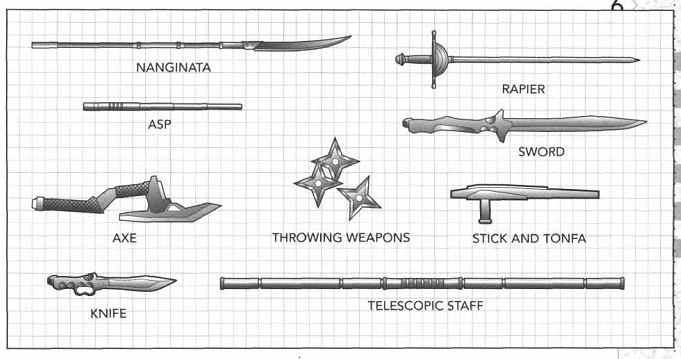
Why did nobody notice the spelling error that is
Nanginata
? And what is an ASP?
Though I guess these questions are superfluous as only the sword, axe, tonfa and knife actually appear on the weapons list (unless you treat the naginata as a pole axe). It appears this picture is from a more extensive book from the last edition. In fact the whole table might also be from said edition, as it doesn't list the parry modifier that I think was introduced in this edition of SilCORE.
Since humanity never grows tired of making up new deadly weapons, we also have a couple hi-tech ones. These are "hummers" (vibro-weapons, available as knives, machetes and katana) and electric weapons, which are no new weapons but rather archaic melee weapons that shock their target on impact. The intensity is variable and can be set from "light tickle" to "pretty much guaranteed knockout with a good chance of frying". Pretty dangerous to an unprepared target.
There's also this picture:
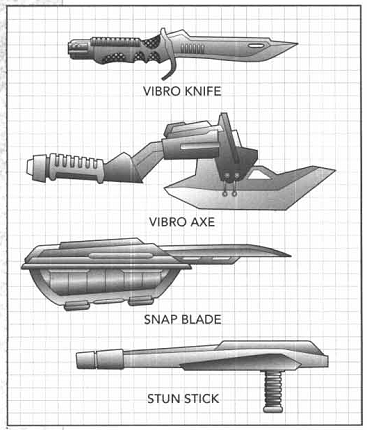
Why are the knife and axe "vibro-" if the JC term for this is "hummer-"? Why is there a Vibro Axe if there is no HummerAxe? What is a snap blade? Is this picture from a Heavy Gear book or something
 ?!
?!
(At least the stun stick is kinda obviously an electric tonfa, though those can do far more than just "stun" people.)
Moving on, ranged weapons start of with bows (but no crossbows; you'd think they would be there if we go that oldschool) and goes through a
lot
of firearm variations. There are 10 different handguns, and most other kinds of firearms have at least 3. Might be a bit much for some, but I think SilCOREs Range Bands and Damage Multipliers allow for slight performance difference without bugging everything down with too many statistics to keep track of.
Notable firearms include:
-
Holt Exterminator Pistol
: A ridiculous CEGA handgun that deals almost as much damage as the strongest sniper rifle. Its recoil makes it a rare sight outside of Earth.
-
Gyrockets
: A sub-category of firearms using rocket-propelled bullets (a bit like Warhammer 40k bolters). Useful in Zero-G environments as they don't cause recoil, but they deal noticably less damage at short range because the bullets need a while to reach maximum velocity.
- Gaussian Weapons : Another sub-category, these are your typical coilguns propelling their projectiles with magnetism. There's a gauss shotgun, but that one's more like a machine gun in that it shoots a precise stream of pellets.
Beam weapons get their own table. They consist of lasers and masers (microwave guns), with a special police sidearm that combines a laser with a sonic stunner. All beam weapons have different settings like in Star Trek, and they all gain an accuracy bonus (because every beam weapon has a built-in laser targeting sight, which is just the normal fire mode on its lowest setting. Not quite sure how this works with masers, though.). They also have the advantage of most types of armor only offering partial protection against them.
Non-lethal ranged weapons includes the classic taser and the sonic stunner, which shocks targets with subsonic waves.
Heavy weapons are the big guns. They're only available to the military and help infantry deal with exo-suits and -armors (though the latter will probably still curbstomp the infantry). The list is pretty much what you expect: machine guns, chainguns, mortar, rocket launchers and of course heavy versions of those futuristic firearms (plus a particle cannon). Of particular note is the "Armageddon Gun", a CEGA favorite that is essentially a machinegune with a built-in grenade launcher (every action hero's wet dream).
Explosives & Grenades list has all the usual suspects, with only maser grenades (aka microwave grenade), night glue grenades (blinds and is sticky) and glue solvent sticking out.
The list of special ammunition also comes with a lot of expected stuff like armor-piercing and tracer rounds. More unusual ammo includes energy-homing and guided (both for missiles and mortars only), as well as recoilless rounds tha turn an ordinary firearm into a poor man's gyrocket weapon. For beam weapons, you can get military-grade high-capacity power cells, which provide more energy at the cost of a possible surge.
Weapon accessories have a lot more interesting stuff. You got your silencers, optical and laser sights (the latter doing nothing for beam weapons as they already have that), but you also have smart sights (which display the exact point of impact after a proper calibration), stabiliziers (keeps the gun stable at all costs, which does make hitting mobile targets pretty hard) and a bunch of special holsters, including quickdraw holsters and snap draw holsters you hide in your sleeves.
For fans of the movie Aliens, there's the harness system (essentially carries weapons for you) and the much more advanced Heavy Weapon Exo-Skeleton that doubles as armor and gives you an effective Strength of +2 (which in SilCORE is a secondary attribute, calculated by averaging your Build and Fitness), making this useful for all but the strongest soldiers.
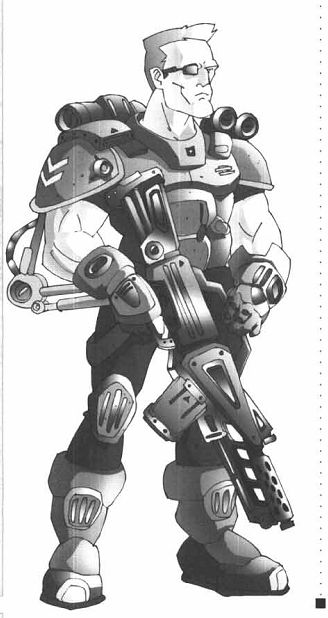
Game over, man.
Defensive Systems
For protection against possible attacks, an increasing amount of ships and stations install defensive systems. These are anti-missile systems (shoots down missiles with automated guns or lasers) and anti-laser aerosol (covers the area with laser-disrupting gas).
Also in this category is armor, which makes sense I guess. You've got your low tech armor like leather and composite armor, as well as hi-tech armor made up of various "dura-" materials. There's also reflec armor against lasers and an interference screen suit against masers. As these two only protect against these damage sources (with reflect providing partial protection against masers), you have the much better option of incorporating their benefits into normal armor.
The armor is listed as a full set (without helmet), with a modifier depending on whether you only use part of the set or add a helmet. Simple and elegant.
There's some pretty nifty stuff in terms of shields: the assault shield (a heavy SWAT shield big enough for two), the protective case (a suitcase that transforms into a shield; very popular with bodyguards) and the stun shield (a riot shield that can shock people).
Similar to space suits, you can pimp your armor with electronic and stealth systems.
Sadly, the armor section only comes with one picture, though that one manages to be both badass and kinda adorable:
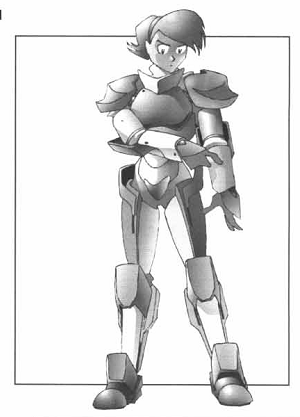
I call her Stormtrooper-chan.
The section ends with OGL stats for all the equipment (minus stuff you can already find in d20 Modern or Future). Seems to be basically taking OGL equipment as the base and scaling things around. Said scaling has been done linearly, as opposed to the "Damage and armor increases exponentially"-mantra used by SilCORE which doesn't really translate to actual in-game effects anyways, so it's fine.
And of course, as soon as the players have more than a handful of levels, weapons will be significantly less lethal as in SilCORE, where not getting hit in the first place is the best option, as everything that can get through your armor will hurt. A lot.
Next time : The heart of every mecha anime (sort of): Giant robots and spaceships!
Mechanical Catalog
Original SA postIt's the final chapter, everyone! Let's go out with lots of pictures!
Jovian Chronicles Second Edition RPG Player's Handbook

Chapter 7: Mechanical Catalog
Now on to one of the most important chapters for an RPG based on a vehicle-centric tabletop wargame: The vehicles!
Exo-Armor and Spaceship Basics
Things start off with a description of exo-armors. They originally started out as combat space suits and became gradually bigger as developers slapped more and more stuff on them. They exist in tandem with spacefighters, who play second fiddle because exo-armors are tougher and nimbler. You'd think this would be the other way around, what with fighters being more compact and all.
Exo-armors have much fancier cockpits than you see in most Gundam continuities. The pilot is surrounded by screens giving him a full view of the surroundings (almost like in BattleTech), and the exo-armor is controlled through a combination of joystick input and the "linear frame", an exo-skeleton in which the pilot is suspended that allows the machine to mimic his every move.
Mechanically, the typical exo-armor has a Size between 11 and 13, with a mass of 40 or more tons and a height of around 16 m. This puts them in about the same mass category as a light tank or a fighter plane, and slightly below most Mobile Suits
Their movement modes are of course Walker and Space. Since Jovian Chronicles uses the realistic Space movement rules, they only have to use their thrusters to change velocity and facing, both of which drains their "Burn Points" (BPs), an abstracted value that keeps track of their space fuel.
Though they don't have a dedicated amtospheric flight engine, they can still fly with their thrusters, though that's not very cost-efficient as they have to constantly cancel out the local gravity and burn their BP fast. They can also use it as a jumpjet, which probably gives them more distance for their BP, especially if they use it to boost their normal jumping distance.
Spaceships range from robust and complex designs to simple modules slapped together with an engine at one end. To provide gravity with their fusion thrusters (aka "plasma drives"), they are rarely not accelerating or decelerating, with the switch happening at the half-way point of their journey. As this creates gravity towards the engine, the layout of a spaceship is closer to a building than a plane.
Most spaceships are not built to enter or operate in an atmosphere.
Everything bigger than a spacerfighter is built using the modular design approach, slapping together sections built separately, with at least one requiring the actual engine output to carry the rest. This requires more bookkeeping than just creating the ship as one vehicle (that may or may not be built on an entirelly different scale from everything else), but it makes for a much better integration with exo-armor and other smaller vehicles as those now actually stand a chance to damage it at least partially.
Spacecraft Maneuvers
These are a couple new rules for spaceships with realistic space movement (SilCORE also supports the cinematic "Thrust? What's that? Everything flies like a plane in space!"-route). Not inlcuded are JC's iconic Lightning Strike rules (the kind of split-second combat that occurs if two ships fly towards each other or one suddenly stops), as those are covered in the main SilCORE book.
-
Fuel Skimming
: Scoop atmosphere gases to replenish your tank. The rules are sound, but the quality editing mentions the mysterious "page XXX" of the SilCORE book
twice
, and it talks about a "Size-to-Mass table" that does not exist (SilCORE just has a formular for both ways). This starts off rather promising.
-
Aerobreaking
: Temporarily enter an atmosphere to quickly lose velocity. Can cause heat damage, especially if your ship was not built for atmospheric entry.
-
Coasting
: For those pilots that either can't afford or don't want to accelerate for an extended time, here's a formular to quickly calculate travel time based on how much thrust you're willing to apply.
-
Gravity Whip
: A popular maneuver for probes in which you use a planet's momentum for fuel-efficient acceleration or deceleration. A bit hard to use as you need to know the planet's speed (though that's one Wikipedia search away), and because the "angle multiplier" table you need to use omits the actual multiplier. Whoops.
-
Hyperthrusting
: Overclock your engines to double their thrust, though this burns fuel much faster and has a good chance of damaging the engine.
-
Using Thrusters as Weapons
: Usually ignored in most pieces of modern fiction, any engine capable of accelerating several tons of mass for interplanetary travel (or even faster) makes for a very nice weapon, though it quickly loses its bite over distance.
- Remote Control : Some rules for drones, which later found its way into the SilCORE FAQ file.
Space Terrain
Here are some rules about realistic space hazards and terrain. This includes planetary rings, radiation belts, shadows (anything blocked off from the sun is pretty darn cold and dark), extreme temperatures and vacuum. Lots of neat stuff.
And now onto the actual vehicles! As exo-armors tend to have all weapons be either handheld or mounted on hardpoints, they can be easily customized. Some of the more iconic exo-armors come with a list of official variants.
These writeups are also where you see the most errors in the entire book, which is a bit embarassing for a company that's all about vehicle-centric tabletop wargames.
For starters, most exo-armors don't mention their sensor and ECM system's range and quality (though the range is listed under the OGL stats made with d20 Mecha). And the weapon lists seem to omit to not the "Hardpoint" and "Handheld" perks.
The writers also didn't include the Threat Value aka point cost of the vehicles, deeming those unnecessary for the RPG part of JC. Admittedly, the main book tells you that you can just ignore the points and just build your vehicles, but then the OGL stats come with both point and credit costs

Pathfinder
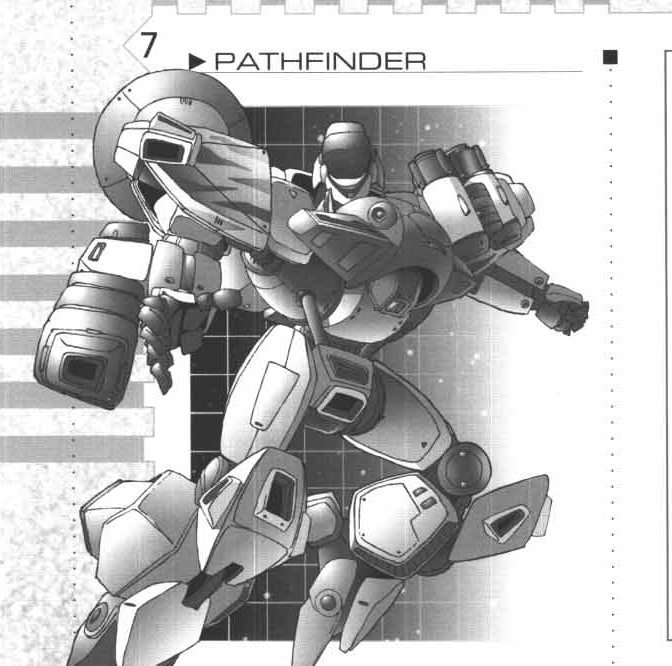
This is the poster mech of the entire franchise, making it the setting's Gundam - though it's also the setting's Zaku as it's one of the oldest designs, making up a good chunk of the Jovian exo-armor forces.
After that surprise visit by an hostile invasion fleet, the Jovians decided to crank out their military production, resulting in the Pathfinder to get upgraded for better performance and easier mass-production.
As a light exo-armor not meant to be a main combat unit, the Pathfinder is lightly armed and armored. Its main weapon is a particle cannon, and it has 2 missiles on its left shoulder for when you need a heavier punch. If things get desparate, it can use two plasma lances for close combat. For a better utility role, the Pathfinder has an advanced sensor system in its massive forehead (which kinda reminds me of an EVA-01 still growing up) and a radar dish on its right shoulder.
Variations include:
-
Pathfinder CT
: The command version of the Pathfinder, trading the particle cannon for an improved particle rifle, with more fuel, better thrusters and communication systems on top. The only downside is that the rifle has ammo, while the cannon can shoot all day.
-
Pathfinder RC
: The recon version, trading the missiles for a more efficient engine and a beefed-up sensor array.
- Pathfinder ST : The sniper version. This one replaces all weapons with better sensors and a long-range massdriver rifle. Despite being a sniper weapon, it does not have the sniper modification that gives a hit bonus at long ranges, though I guess this is not mandatory. Then again, this is the only mecha sniper weapon in the book that does not have this modification.
Retaliator
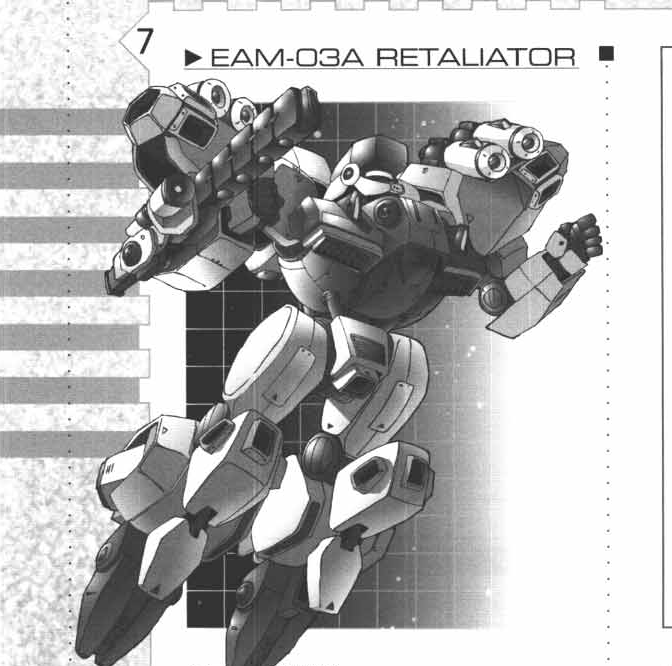
The Retaliator is an interceptor exo-armor who packs quite a mean punch for its size, though it is comparatively lightly armored. Aside from 2 plasma lances, it carries a railgun and a total of 10 missiles.
Vindicator
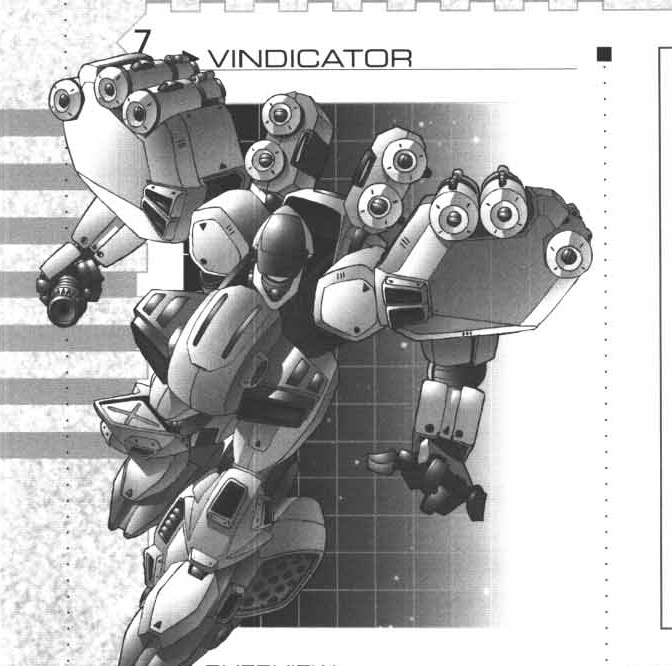
The strongest mass-produced exo-armor there is, and one of the newest models in the Jovian military. It's not very fast, but it is heavily armored, with an anti-missile system, a railgun/laser combination (though the lasers are weaksauce backup weapons) that is not shown on the picture and a crapton of missiles that are very spammable.
(Though I'm starting to wonder why those shoulder-mounted missiles count as a single missile system with 10 shots. Looks more like 10 one-shot systems. Makes the missiles harder to take out, and the pilot could launch, something mecha pilots love doing. Or if you want to keep things simple, at least give that one missile weapon some ROF so you can launch multiple missiles.)
Stormrider
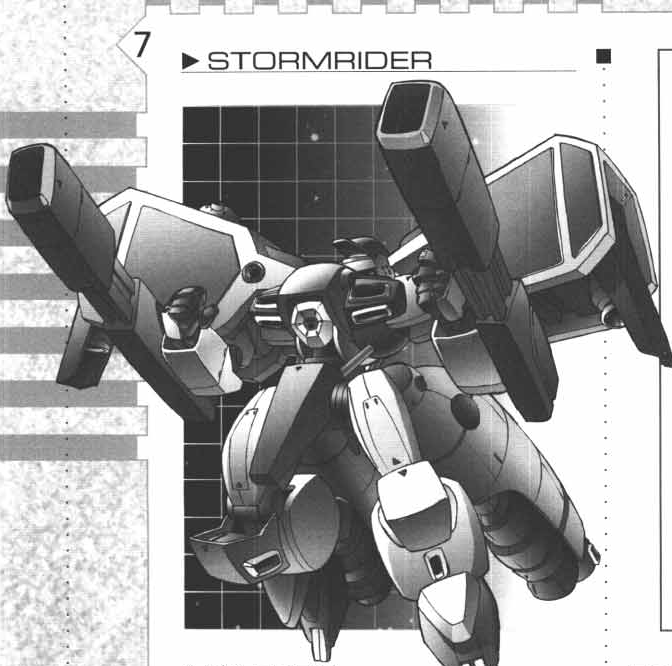
This ridiculous fellow is based on a configuration (aka Mekton Command Armor) for the Prometheus prototype exo-armor. Still more or less a prototype itself, the Stormrider has nevertheless shown some promising results.
If the huge particle cannons and the massive thrusters are any indication, the Stormrider's main purpose is that of a fast assault unit. It also comes with a chest-mounted scatter launcher aka shotgun, a ton of missiles (though I'm pretty sure that puny Damage Multiplier of 10 is an error; they typically have 16-30), and a point-defense laser system.
Overall, it doesn't really hit harder than the Vindicator, but it does so faster. Though I was honestly expecting more oomph from those oversized guns (they actually just have improved range over the saner models).
Lancer
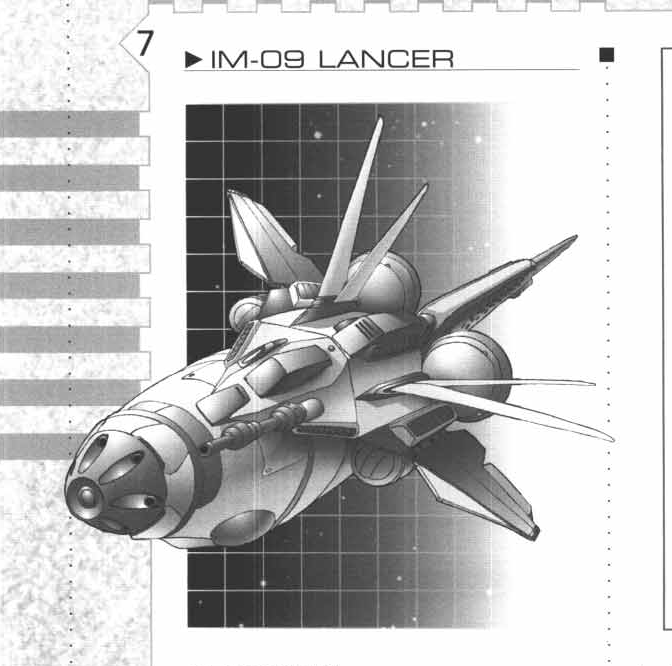
The primary Jovian spacefighter, this interceptor carries a giant, rocket-shaped weapon pod around for quick and easy weapon swapping. The standard loadout consists of various missile types, with options for a laser, more missiles or rockets. It also comes with counter measures.
It also has some weird antennae that give the whole design a rather alien/insectoid look.
Syreen
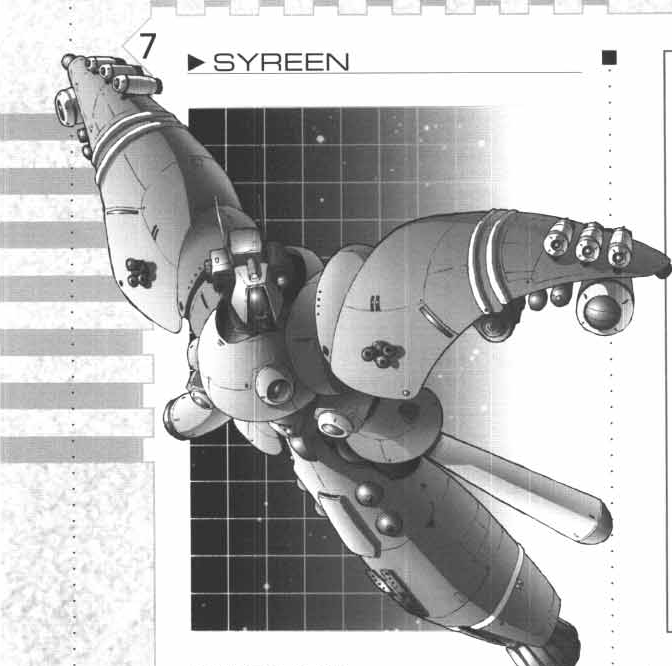
This CEGA creation is the result of the Earthlings freaking out about all those fancy mecha used by everyone else, so they quickly cobbled together this slightly humanoid rocket. Still, despite its cheapness, it has some neat stuff, like a laser system that automatically hits any enemy that comes too close. Though since this was a rush job, the system has a tendency towards friendly fire.
Other than using said laser system manually at range, it has a lot of missiles.
Wyvern
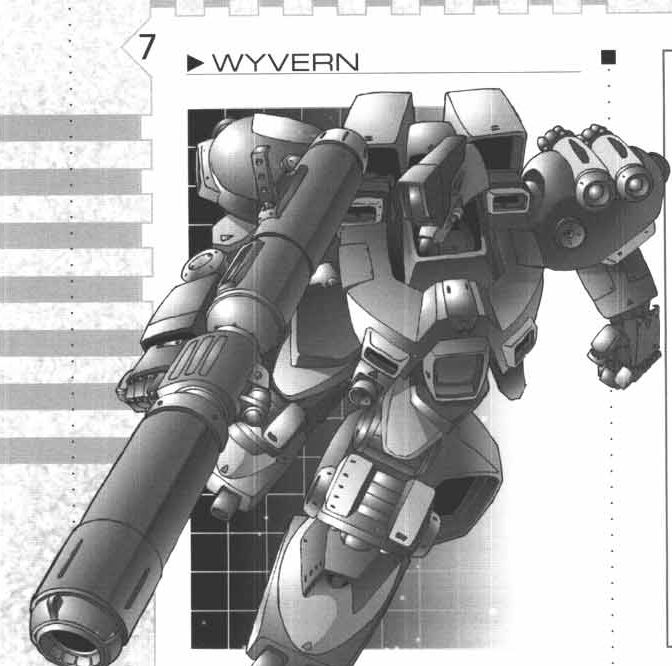
Since the Syreen couldn't keep up with the lastest Jovian models, CEGA built a proper exo-armor (based on an older exo-armor model they got from Mars) in the form of the Wyvern, aiming to best the Jovians with superior firepower and armor. It comes with an anti-missile system and two head-mounted anti-infantry massdrivers (making it more Gundam-ish than the Pathfinder), along with a bazooka, shoulder-mounted missiles and leg-mounted rockets.
Like the Pathfinder, it comes in several variants:
-
Wyvern Command
: Like the previous command variant, this is one is s straight upgrade from the standard model, with more speed and better sensor and communication systems. It also trades the bazooka for a much meaner automatic rifle.
-
Wyern Marine
: This one has additional armor plating and comes with both the bazooka and the rifle. It also gets a hummer knife, though there are no stats provided for it (though those appear on the next model, who also has the knife).
- Wyvern Bomber : The missile spam version, ditching the bazooka for additional shoulder missile launchers and a handheld rocket pod.
Cerberus
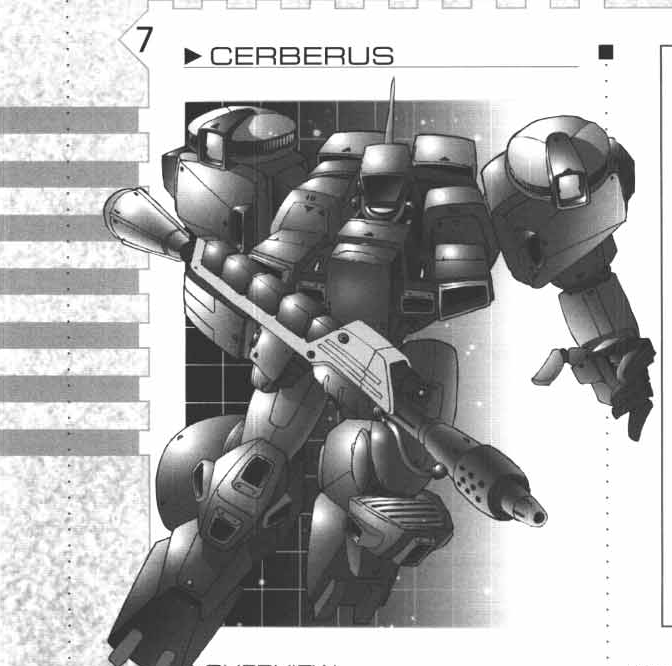
The newest CEGA model, created with Venusian help. Its name comes from the shoulder-mounted radar and ECM systems, which do look a bit like heads.
The Cerberus combines high speed with very heavy armor, though that leaves very little in terms of weaponry: It carries an automatic sniper rifle, Gundam vulcans, a knife and a plasma lance.
Fury
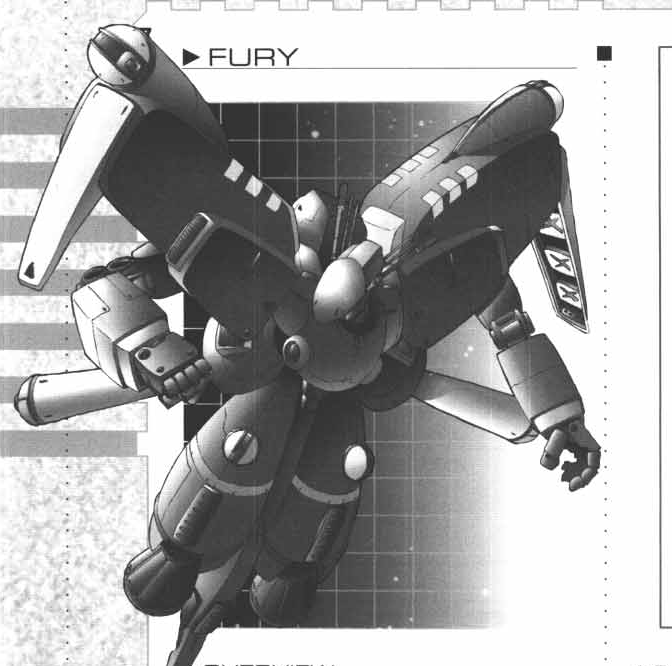
Taking a cue from the Dragonstriker prototype, this exo-armor is a straight upgrade of the Syreen. It comes with a more advanced laser system geared more towards missile defense than autonomous firing. The shoulders come with 8 hardpoints, making the design very flexible.
Since the standard Fury has lots of empty hardpoints, they fall into one of 3 variants, which are named after the three furies of Greek mythology:
-
Alecto, The Unceasing
: The recon model, with better sensors and stuff and recon drones.
-
Megaera, The Grudging
: The default model, comes with a shoulder-mounted sniper railgun and missiles for the shoulders.
- Tsiphone, The Avenging : This one's used to take down ships. It has plenty of room for torpedoes, and it comes with two extra-powerful plasma lances that go through ship hulls like a hot knife through butter.
Wraith
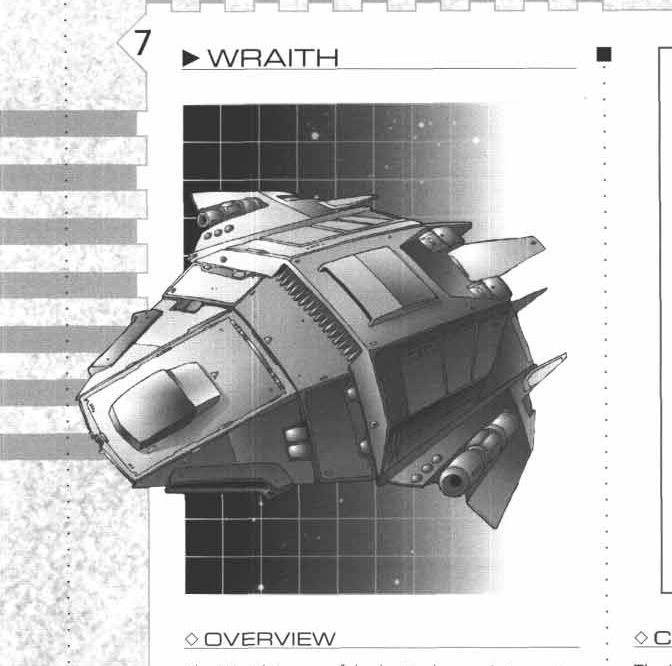
CEGAs old interceptor fighter with a two-man crew. Has some flexible hardpoints, and the standard loadout consists of two particle cannons and a missle bay.
Brimstone
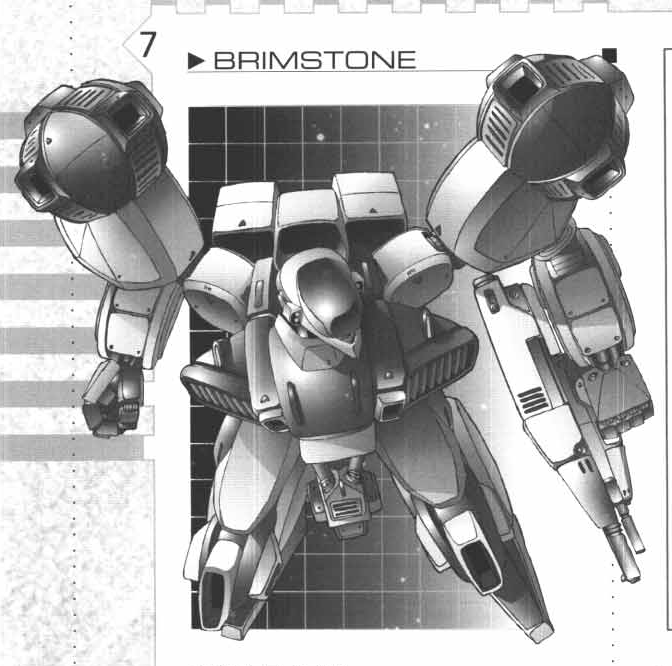
The shiny new Mercurian exo-armor. Heat-resistnt, fast and maneuverable, it suffers from a lack of fuel and serious firepower. Nevertheless, it's popular for protecting merchant ships and helping out with the cargo.
Ryu
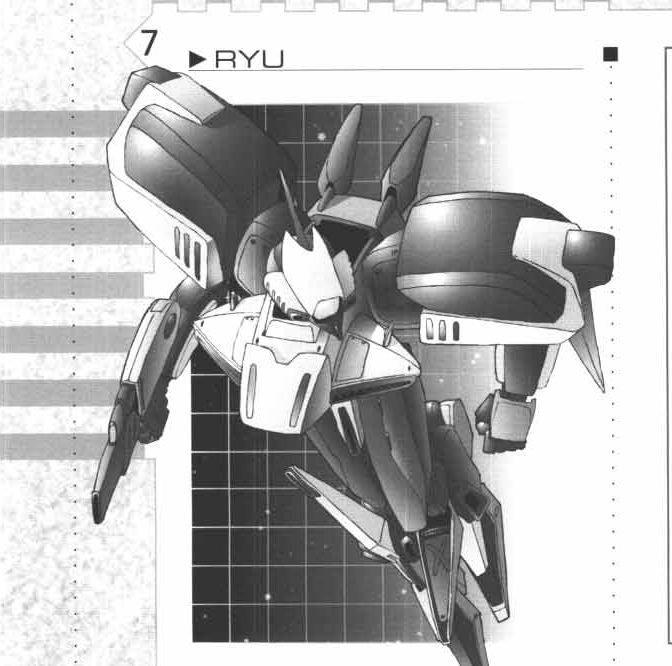
The most recent Venusian toy, still kept very secret (the current Venusian main mech is the Oni, which is pretty much a Wyvern). It comes with two plasma lances, shoulder-mounted missiles and a rifle, with possible options including heavy missiles and particle cannons. It also has a sort of Gundam vulcan on its head, though this one fires laser beams.
Minotaur
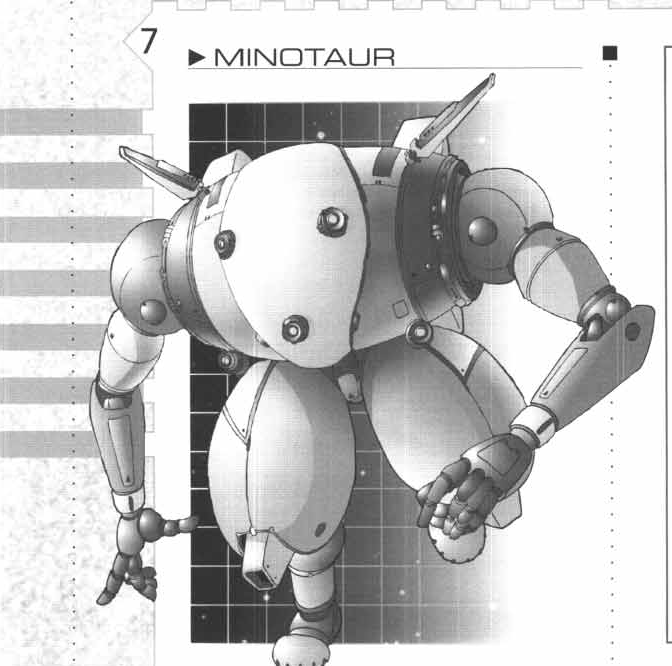
A goofy-looking CEGA exo-suit, with a height of 2.8 meters. It's pretty much oversized power armor, making boarding action in more cramped ships and stations pretty hard. It comes with a hummer blade, grenades and one of two rifles.
As an exo-suit, it's not really a threat for exo-armor, but it makes short work of infantry.
Falconer
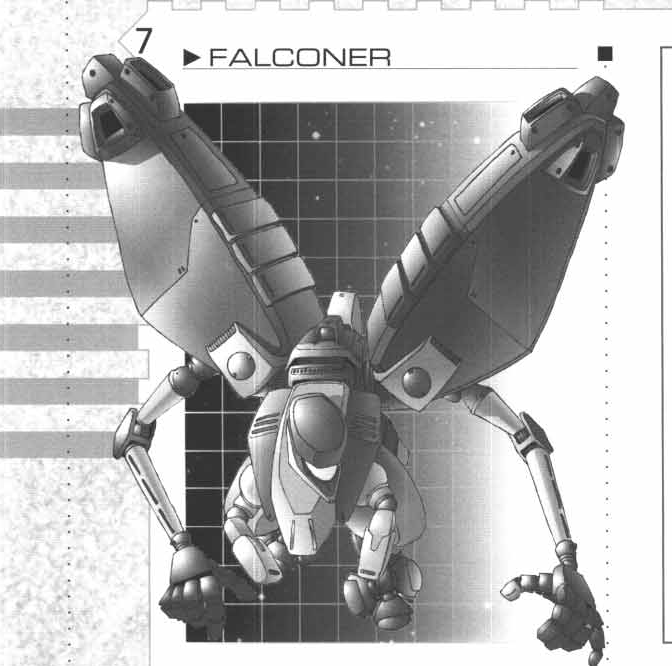
The main Jovian exo-suit. It's smaller than the minotaur (2.2 meters) and more geared towards speed than endurance. It defends itself with a plasma lance, missiles and a rifle.
Bricriu-Class Corvette
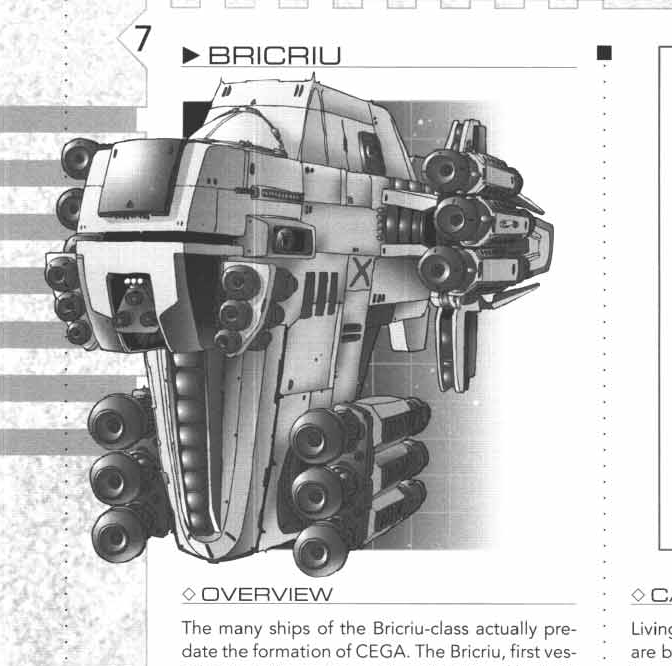
The Bricriu-class (a very hard to remember name) is quite old, but still servicable ship design in CEGA use. It's a bit cramped like a submarine, but you can't have everything, can you?
The ship is made out of 6 sections in total: The main section with the point-defense systems, 4 turret sections (each with either 3 kinetic kill or beam cannons), and of course a drive section.
Tengu-Class Escort Carrier
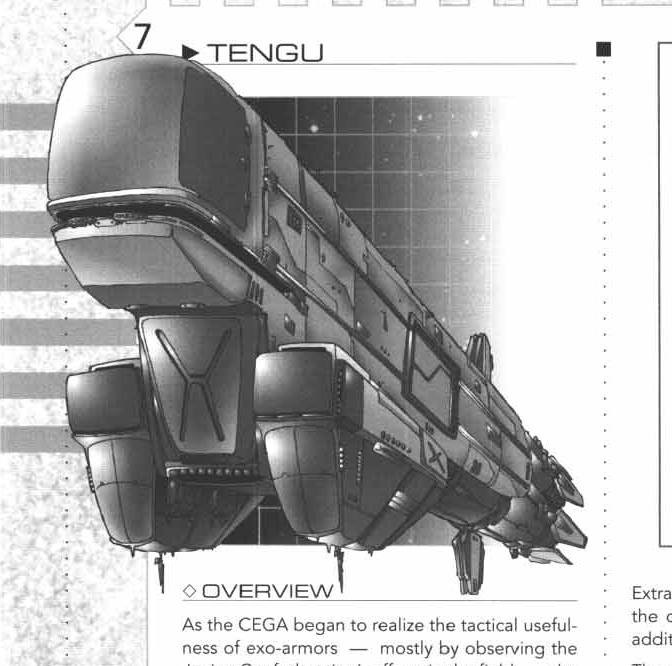
CEGA's main exo-armor carrier, and quite the succesful and spacious design. Aside from the main section, it has 2 missile tubes, 2 vehicle bays and 2 drive sections.
Athena-Class Destroyer
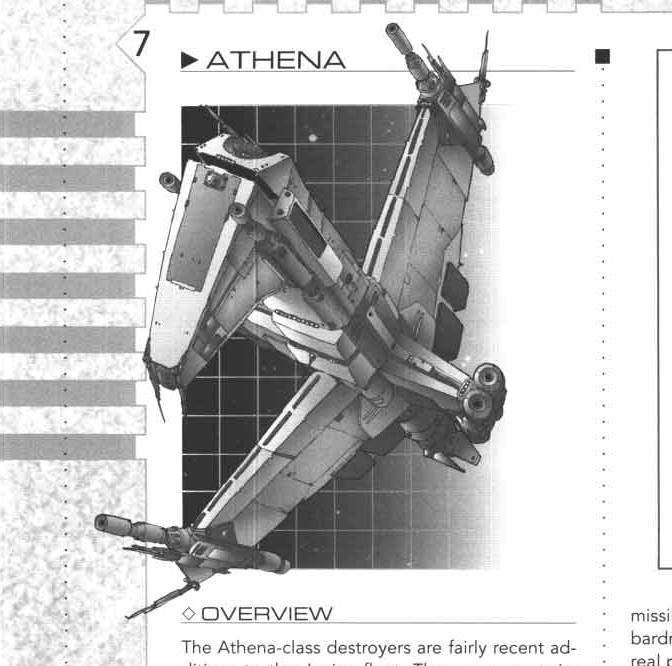
The newest Jovian destroyer, quite fast and maneuverable for its size. Apart from its main section, it has 2 drive sections, 2 kinetic kill sections and 2 wing sections with oversized laser cannons.
Valiant-Class Strike Carrier
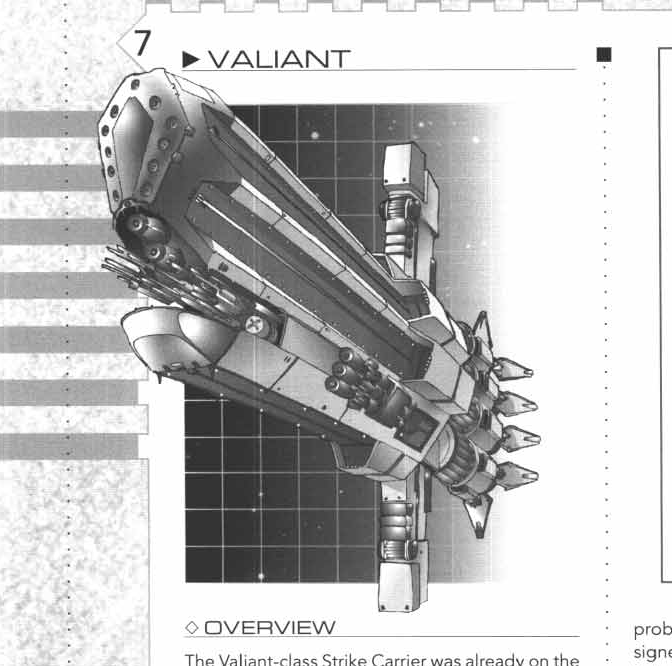
Jovian's most recent carrier ship, this one has comes with a main section, 2 habitat sections (making it quite comfy), 2 kinetic kill cannon sections and 4 drive sections.
And of course, it being a Not-Yamato of sorts, it has a spinal laser that takes a long while to charge up, but has a good chance of one-shotting just about everything it manages to hit.
Ebiiru-Class Cargo Ship
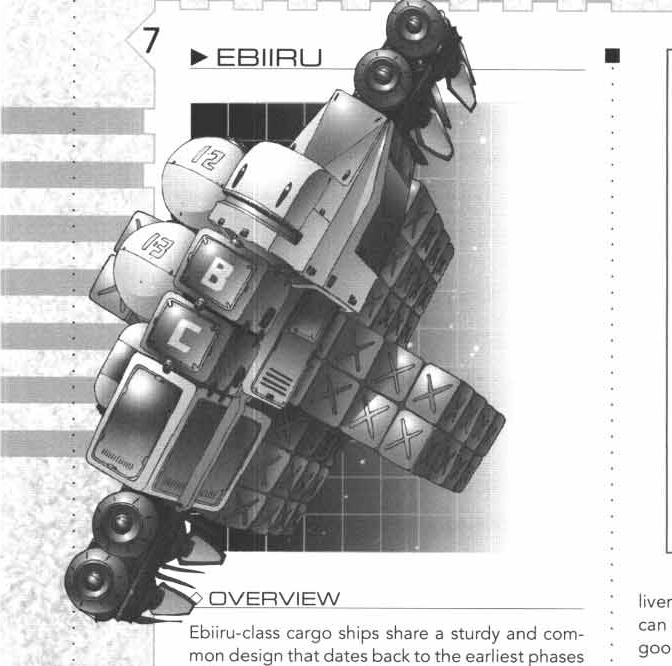
A very old and pragmatic cargo ship, it's essentially a bunch of cargo pods stuck on some crew modules and an engine.
Inari-Class Cargo/Liner Ship
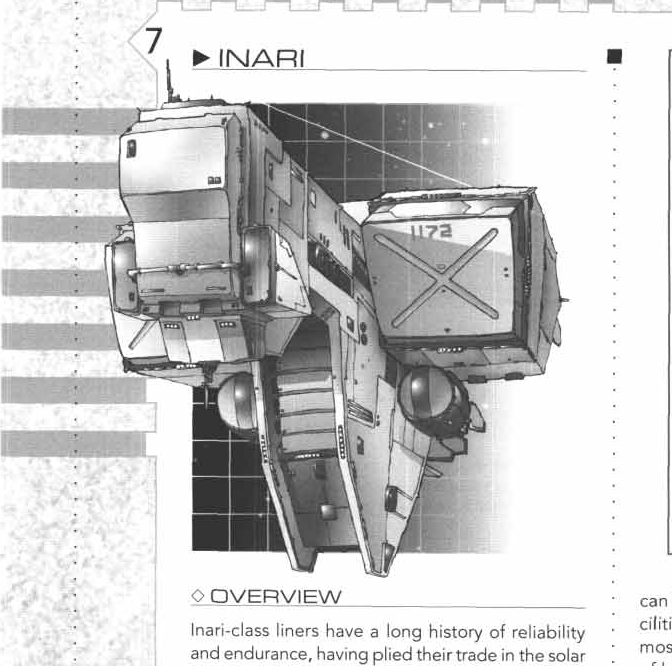
A much nicer looking ship than the Ebiiru, this one carries both cargo and passangers, usually both at the same time because you gotta multitask to make profit in space.
Mule-Class Bulk Tanker
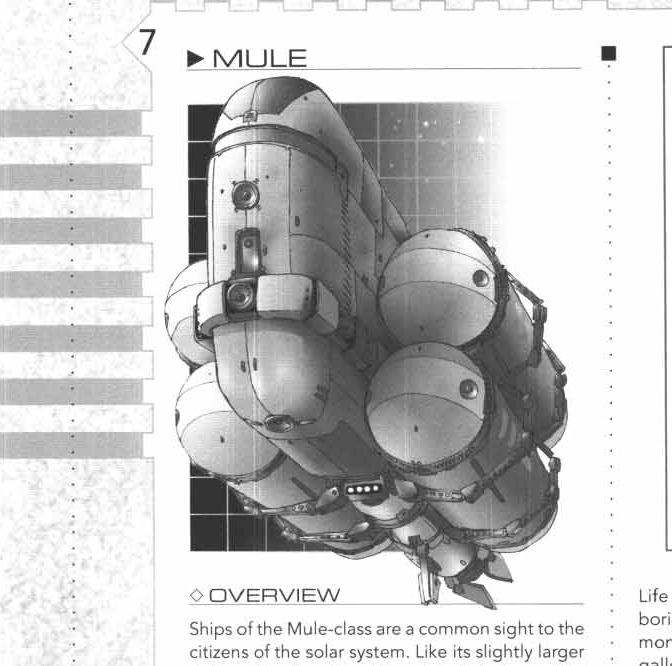
Your standard tanker ship. They're mainly meant for the heroes to protect or destroy.
And for some fanservice, here are female exo-suit pilots in vacuum suits:
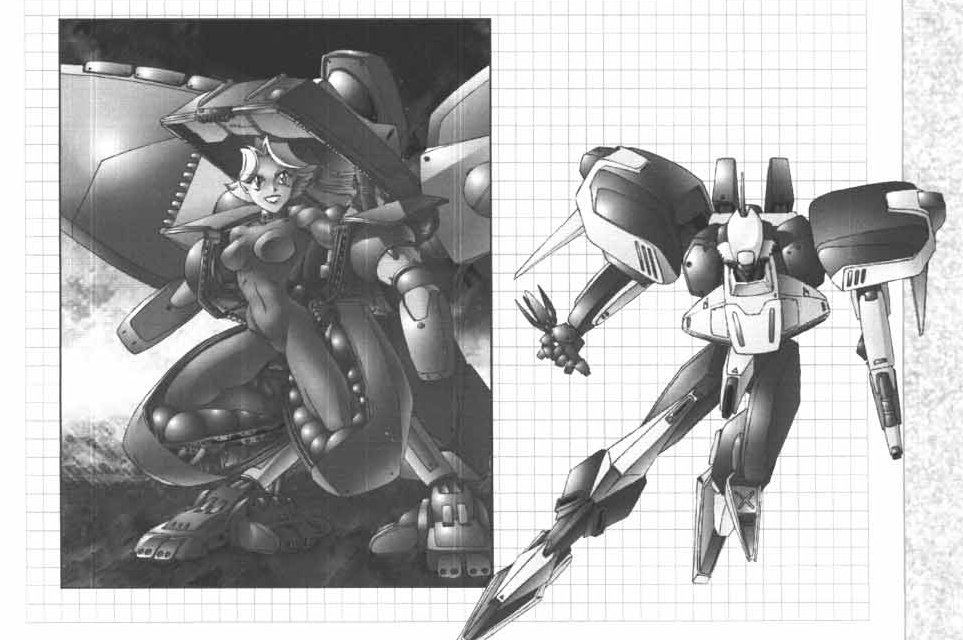
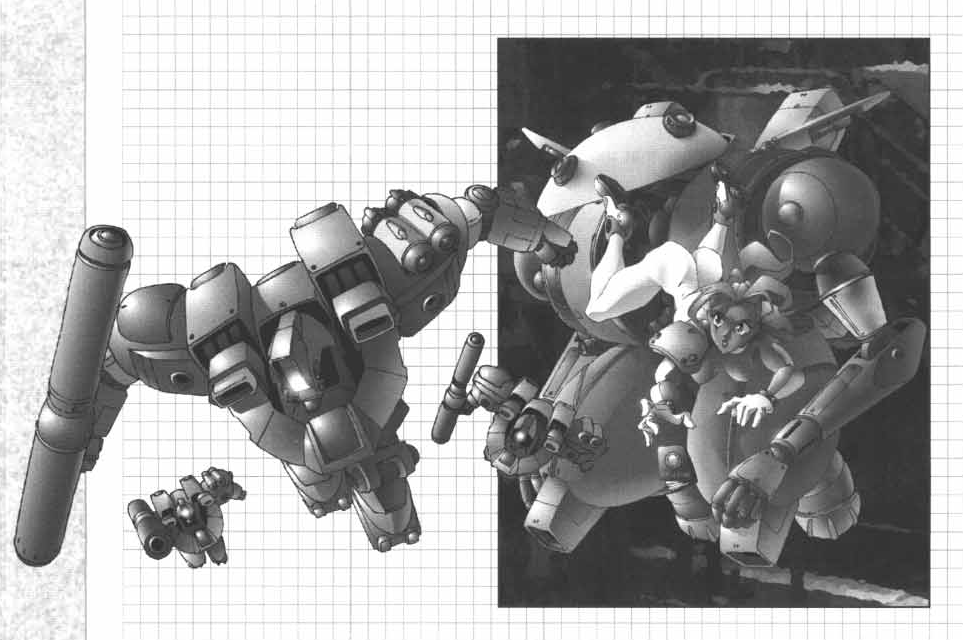
Shouldn't the Jovian Falconer pilot have the white suit? That's kinda closer to their general color scheme.
Generally, the designs aren't too shabby, especially the stylish Ryu, the Lancer fighters and those freakish CEGA rocket mechs that are probably some of the most sensible giant robot designs out there (who needs legs in space, anyways?). The Pathfinder is a simple and elegant design, but the Jovians seem to suffer from a serious lack of design variety, as all their exo-armors here look almost identical. And in the end, most exo-armors can't quite keep up with the more interesting/badass Gear aesthetics of DP9's main flagship setting.
And of course, the error-prone writeups leave something to be desired.
That's about all for the book. There's a short Appendix, but that's just a random adventure generator for stereotypical mecha anime episodes. Thankfully, the book is clever enough to note that these are just guidelines.
Overall, the setting's rather servicable as a totally-not-Gundam setting. It however loses some points for painting the factions with too much black and white after starting off talking about grey areas, and Mars really doesn't sound too interesting as they're mainly concerned with their "Cowboys vs East Germans" sub-setting that doesn't offer much synergy with the rest as Mars doesn't have a real military presence in space. It looks like if this cold war turns hot, they'd be at the mercy of whoever has currently the most warships in orbit. Oh well, at least the Venusians are lulzy.
Oh, and the quality of the scan is a bit meh. The pages apear bleached out, at almost every picture has some slight scanlines going on (or whatever you call that).
So, what do you want to see next? Do you wanna see CORE Command , the result of DP9's last RPG staff trying to build a setting from the ground up (without previous editions to copy stuff from)? Or do you want to see something else?